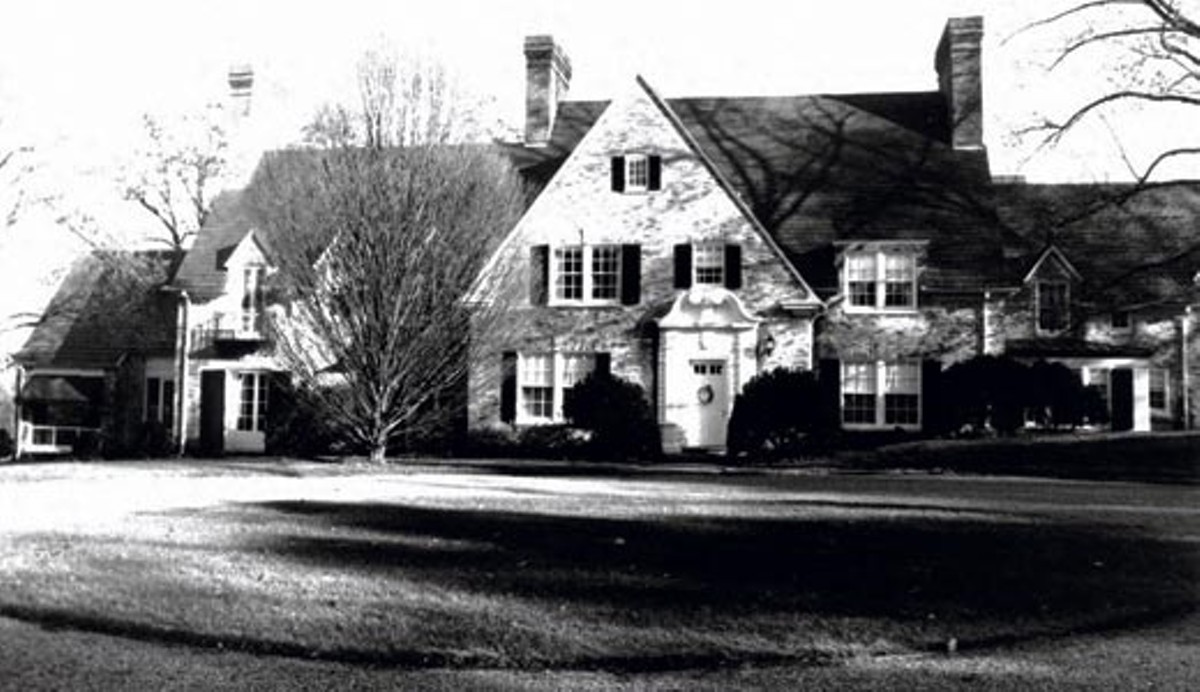If you want an idea of how expensive the $4.1 billion Ohio River Bridges Project really is, consider the Drumanard.
Built in 1929 by wealthy landowners Alexander Watson and his wife, Jessie Strater, the Drumanard — that’s Scottish for “hill top” — is located at 6401 Wolf Pen Branch Road, secluded by a winding trail lined with trees planted by the firm of Olmstead Associates. There’s a majestic garden, a gazebo and even a gardener’s house sharing the 49 acres of pristine East End real estate.
Bucolic though it may be, the Strater-Watsons, described by the Filson Historical Society as “an affluent, socially active Louisville family,” would likely have never envisioned that their country estate would today be gumming up the works for the most expensive infrastructure project in Kentucky history.
Because Drumanard is listed on the National Register of Historic Places, and lies directly in the path of an on-ramp to the proposed East End bridge, traffic engineers are required by the 1966 Historic Preservation Act to build that on-ramp underneath the property — to the tune of $260 million, and rising.
Since the tab for an East End bridge approach clocks in at $753 million, a Drumanard tunnel will consume up to 33 percent of the cost.
“Obviously, the costs associated with it are the biggest issue,” says J.C. Stites, co-founder of 8664, an alternative proposal to the ORBP that includes the construction of an East End bridge as a core component. ORBP, on the other hand, proposes construction of a downtown and an East End bridge. When asked about Drumanard’s historic designation, Stites says, “I think it’s fair to question the motives for it being put on the historic registry.”
Like many proponents of a scaled-down solution to the unwieldy public works project, Stites believes Drumanard is unfairly halting bridge construction in the East End at the expense of other historic properties downtown, namely the Butchertown neighborhood, which under the ORBP plan would lose several blocks to the expansion of Spaghetti Junction, including the Louisville Extreme Park.
“One of the great scholars of the historic preservation movement is Donovan Rypkema,” Stites says of the Washington, D.C.-based real estate planner. “He gave a speech a few years ago (at a 2006 smart growth conference), saying that historic preservation has changed. ‘The dead rich white guy approach is over, we’ve moved beyond that.’ The idea of saving these big mansions and preserving them while we’re losing the fabric of our historic neighborhoods is not a fair trade off.”
Mark Dennen, executive director of the Kentucky Heritage Council, believes that since Drumanard’s application was approved, then a legitimate case was made for its historical significance.
“We feel a pretty strong case was made by the application for that listing,” Dennen says. “Otherwise, it wouldn’t be listed. From a preservation standpoint, if something has gone through the process, and met all the criteria, then there was definitely a case to be made that was ultimately accepted.”
Plus, he says determining historical significance is a subjective endeavor, and that one property’s value can’t be judged against another’s. In this context, consider also the Farmington estate, which was home to the Speed family and, for a few weeks, Abraham Lincoln. Built in the early 1800s, it also happens to be located closer to I-264 than Drumanard would be to the East End ramp, whose aboveground construction would only devastate a few acres of trees.
When asked about this, Dennen concludes, “We don’t look at properties in comparison to other properties.”
Marianne Zickuhr, executive director of Preservation Louisville, agrees — for the most part.
“I think everyone’s going to have a different opinion,” she says. “In the end, no matter which direction this project takes, we should always talk about the possibility of preserving what we have. We’re not going to come out in favor of either bridge. Both would have an impact on historic structures in a very negative fashion.”
This all-encompassing preservationist ethos jibes with that of River Fields, a wealthy conservation group that has lobbied consistently for the construction of a downtown bridge to preserve its holdings in the East End.
“I can’t really speak to the governance of River Fields,” Zickuhr says. “River Fields encompasses more than just preservation. They aren’t the same organization as we are. I just want to be very clear that Preservation Louisville isn’t going to be in support of the destruction of any asset across the city. We’ll do that whether it’s in the East End, Butchertown, Germantown or Portland.”
Lee Cochran, former director of River Fields, says she left the organization for this very reason.
“It got to a point where it wasn’t about preservation anymore,” she says. “The Drumanard is obviously not your average story of ‘Joe gets a job, Joe buys a house, Joe raises a family.’ It’s about preserving the history of the rich at the expense of the poor.”
In 1988, the Jefferson County Office of Historic Preservation and Archives submitted an application to the National Register of Historic Places in an effort to get a historic designation for Drumanard. At the time, then-property owner Mary Peabody Fitzhugh submitted a letter objecting to her home’s listing on the registry, although without giving a reason. Four years later, however, she rescinded the objection, and the designation was approved. LEO Weekly placed calls to members of the Fitzhugh family, but did not receive a response.
A 2007 Courier-Journal article quotes a Harrods Creek fire chief who believes the tunnels would be more dangerous for vehicles than the Cumberland Gap tunnel, which is the longest underground tunnel in the state. And in just three years alone, the cost of the tunnel has skyrocketed 300 percent.
Meanwhile, the Louisville-Southern Indiana bridges Authority is scrambling to find a way to pay for the Drumanard tunnels as well as the rest of the project. By the end of the month, they expect to have a working financial plan, which will inevitably include some form of tolls, whose ultimate price is directly affected by the ballooning costs.






